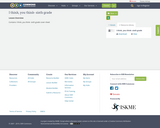
Contains I think, you think- sixth grade cover sheet
- Subject:
- Elementary Education
- Material Type:
- Lesson Plan
- Author:
- Meghan Haley
- Date Added:
- 07/15/2019

Contains I think, you think- sixth grade cover sheet

The attached Lesson Plan is designed for Third Grade English Language Arts students. Students will determine story elements and use the elements to write a summary. This Lesson Plan addresses the following NDE Standard: NE LA 3.1.6.b and NE LA 3.1.6.dIt is expected that this Lesson Plan will take students 90 minutes to complete.

Hands-on experience designing, conducting, analyzing, and presenting experiments on the structure and processing of human language. Focuses on constructing, conducting, analyzing, and presenting an original and independent experimental project of publishable quality. Develops skills in reading and writing scientific research reports in cognitive science, including evaluating the methods section of a published paper, reading and understanding graphical displays and statistical claims about data, and evaluating theoretical claims based on experimental data. Instruction and practice in oral and written communication provided.
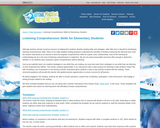
This article discusses explicitly teaching and assessing listening comprehension skills in the elementary grades and provides templates for classroom use.

This course is designed for high-intermediate ESL students who need to develop better listening comprehension and oral skills, which will primarily be achieved by detailed instructions on pronunciation. Our focus will be on (1) producing accurate and intelligible English, (2) becoming more comfortable listening to rapidly spoken English, and (3) learning common expressions, gambits, and idioms used in both formal and informal contexts.
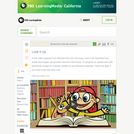
This video segment from Between the Lions features a catchy song that celebrates an important function of literacy: access to information. It also shows the wide world of print, and all of the knowledge that can be gained from it.

The attached lesson plan is designed for kindergarten and first-grade students. Students will make a connection with the character in the book. This lesson plan addresses the following NDE Standard: LA 0.1.6 h, LA 0.3.2.a, LA 1.1.6.h, LA 1.3.2.a.
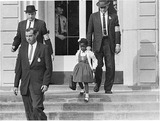
Goal/Objective:The students will construct meaning of an informational text while developing a multicultural perspective. Overview:This comprehension lesson focuses on a variety of reading skills, including making predictions and inferences, comparing/contrasting, answering inferential/critical questions, applying context clues and word structure to determine the meaning of words, and making text-to-self/text-to-world connections. All of these skills are taught alongside students learning about the Civil Rights Movement, the impact it has had on our nation, and the importance behind the story of Ruby Bridges.Grade Level:This lesson focuses on 4th grade standards, but can be adapted for any upper elementary classroom. Modifications/Accommodations:This lesson can be modified/accommodated for students with special needs. The lesson is derived from the ReadWorks.org website. If teachers create a free account to the website, students can have the passage, as well as the comprehension questions, read aloud to them.

Madeline Noonan uses "The Sneetches" by Dr. Seuss as a touchstone text creating a shared experience with the class that can be referred back to again and again. In this lesson, the touchstone text teaches students about looking for metaphors and symbols across an entire text rather than just a phrase or sentence.
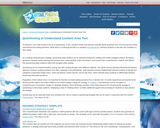
This article provides an overview of questioning as a reading strategy and includes templates and links to books, lesson plans, and web sites for more information.

This lesson will be a real-world scenario-based reading module for Reading Scientific and Technical Text, for readers at level 7. Through an interactive visual scenario, learners will be introduced to a sample loan application form, and will be walked through the meaning and purpose of primary portions of the form and challenging terminology in it.

Resource by Stephanie Genco, St. John the Baptist, Alden. Includes full Novel Study w/ pre- and post-reading activities, Reading for Meaning questioning while reading, vocabulary tools, and discussion questions using QAR (Question-Answer Relationships). Also includes learning targets and NYS CCLS for 5th grade.

Resource by Denise Carlson, St. Peter's. Includes Reading for Meaning Lesson for Ch. 14, "Las Uvas." Also includes post-reading projects and comprehension questions for the entire novel.
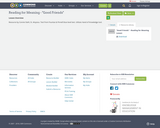
Resource by Connie Stahl, St. Aloysius. Text from Fountas & Pinnell blue level text. Utilizes Hand of Knowledge tool.

Resource by Maria Wangler, Christ the King. Includes CCLS for Kindergarten.
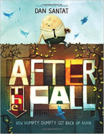
Contains learning targets, pre- and post-reading activities, vocabulary rating, team-o-graph, and Reading for Meaning questioning.
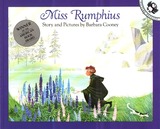
Resource by Kelly Shivinski, Catholic Academy of West Buffalo. Includes Reading for Meaning questioning, vocabulary rating, character analysis, and synthesis tasks. Also includes CCLS for 4th grade.
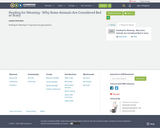
Reading for Meaning 5-7 day lesson by Joyce Jackson.

In this video segment from Between the Lions, Sloppy Pop's song Read the Signs spotlights the letters and words we see on signs every day, encouraging children to be aware of print in their environment.
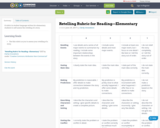
A rubric in student language written for elementary students to self-assess the retelling of a story.